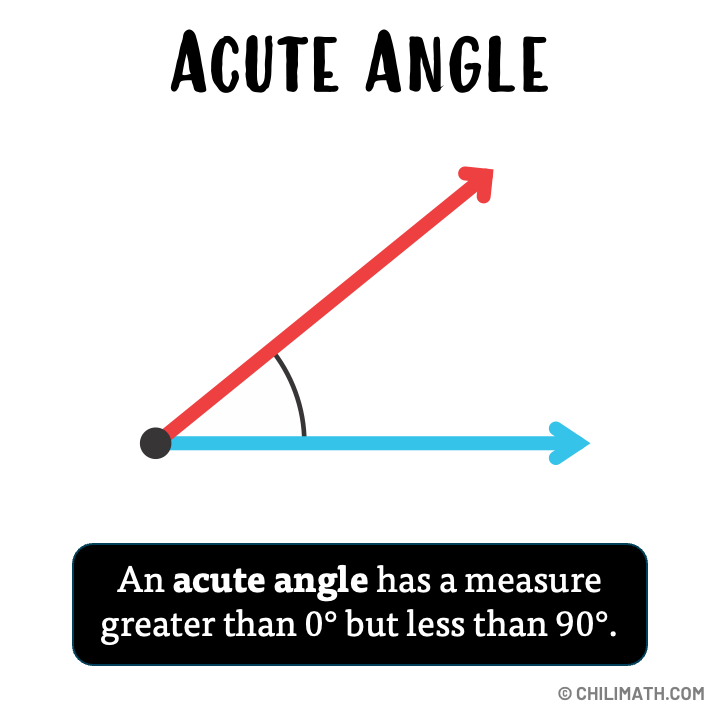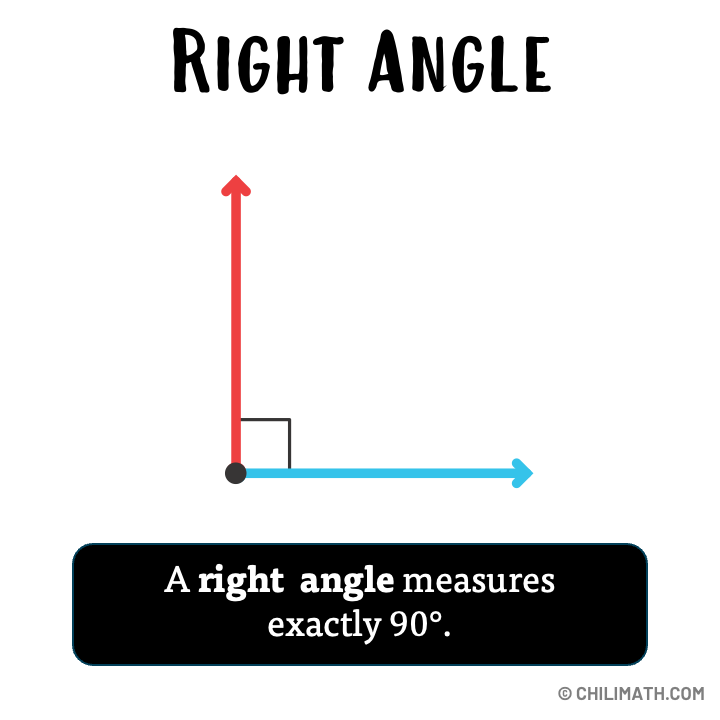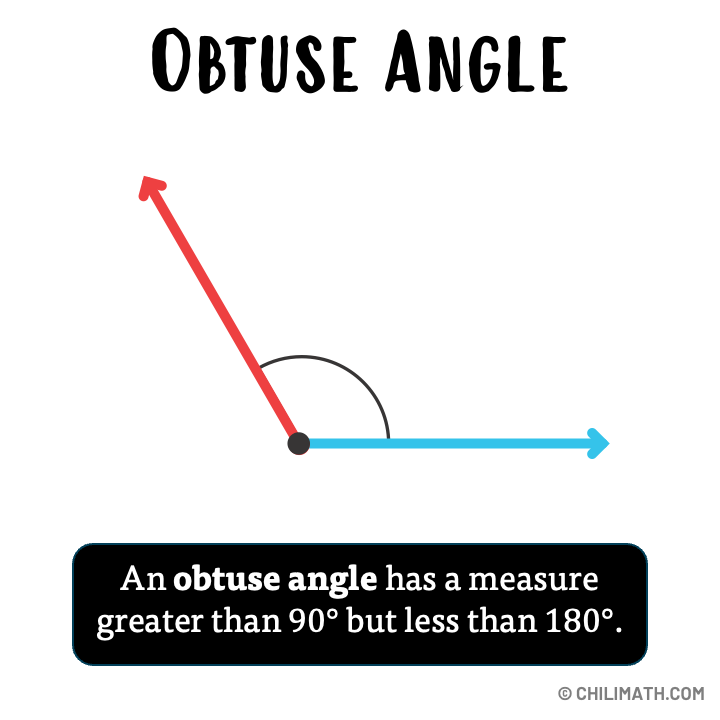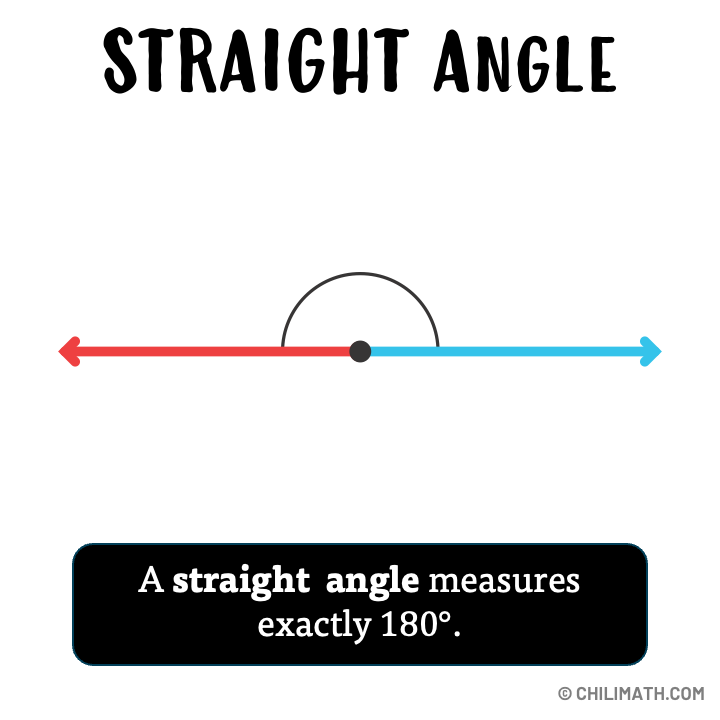Types of Angles

An angle is formed by two rays with a common endpoint. The common endpoint is called the vertex. Angles are measured using a tool called a protractor, and the unit of measurement is degrees. The symbol for a degree is \(^\circ\). There are seven (7) types of angles based on their degree measures.
1) Zero Angle
A zero angle is an angle whose measure is exactly 0 degrees. This occurs when the two rays that form the angle overlap, meaning that they lie on the same line and point in the same direction. More simply said, there is no “opening” between the two rays.

2) Acute Angle
An acute angle is an angle that measures less than 90 degrees but greater than 0 degrees. It appears sharp or narrow and is commonly seen in triangles, specifically in acute triangles, where all three angles are acute.

3) Right Angle
A right angle is characterized by the perpendicular intersection of two lines or segments, forming an “L” shape. It measures exactly 90 degrees.

4) Obtuse Angle
An obtuse angle is an angle that measures more than 90 degrees but less than 180 degrees. In other words, it’s wider than a right angle but not as wide as a straight angle.

5) Straight Angle
A straight angle is an angle that measures exactly 180 degrees. It represents the angle formed when two rays extend in opposite directions, creating a straight line.

6) Reflex Angle
A reflex angle is an angle that measures greater than 180 degrees but less than 360 degrees. It represents the larger angle between two rays. In other words, It is the larger portion of the rotation between two intersecting rays.

7) Complete Angle
A complete angle, also known as a full rotation, is an angle that measures exactly 360 degrees. It represents one full rotation around a point, where the initial and terminal sides of the angle coincide, forming a full circle.
